The following information outlines some of the measures the City has implemented to maintain the safe movement of traffic with minimum delay by using nationally accepted standards, guidelines and procedures.
Protected Left-Turns
What is it?
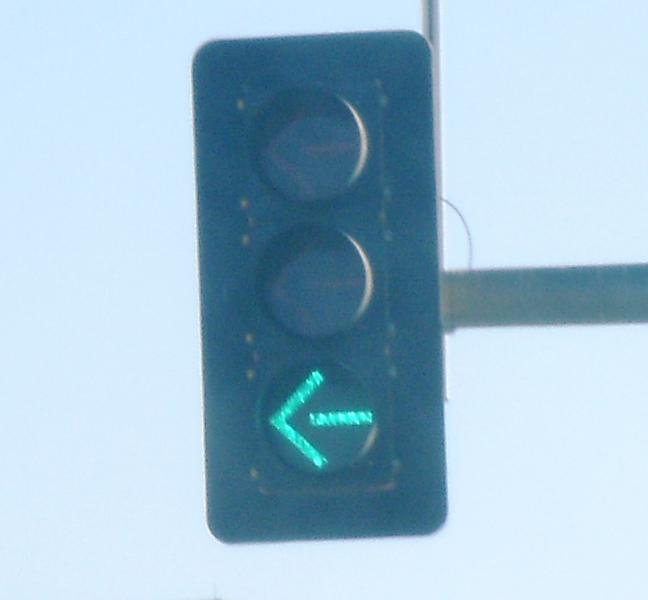
A protected left-turn signal provides the motorists a period of time where left-turns can be made without encountering conflicting vehicular and pedestrian movements. The current standard will include a red arrow on top, a yellow arrow in the middle, and a green arrow on the bottom arranged vertically and there will be no supplemental sign as with the image to the left.
When are they used?
- When left-turns are permitted from two lanes on one approach and there is an opposing through movement
- When the left-turn traffic queue frequently extends beyond the left-turn lane, thus blocking the through movement
- When a significant left-turn volume is present during peak traffic hours
- When intersection geometry creates a visibility problem which may be alleviated by a left-turn phase
- Where the speed of approaching traffic is sufficiently high to make driver judgment of gaps difficult
What are the issues?
Motorists naturally feel a higher degree of safety making a left-turn with an arrow. However, in many cases, the turning capacity provided by gaps in oncoming traffic plus the yellow signal phase can safely accommodate left-turns at an intersection.
The careful design of a phasing plan for a signalized intersection is essential to its safe and efficient operation. Unwarranted signal phases create undesirable effects in terms of stops, vehicular delay, and increased fuel consumption.
Protected/Permissive Left-Turns
How does it work?
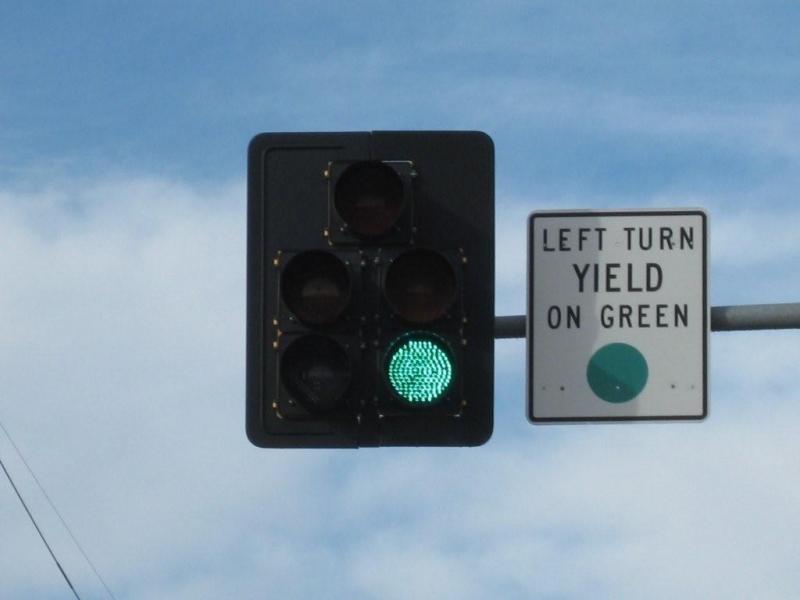
A five-section left-turn signal head was developed and implemented in the past at numerous intersections in the City. Under this new arrangement, left-turn signals provide the usual green arrow, which is followed by the yellow arrow. After the yellow arrow has terminated, left-turning motorists are faced with a solid green ball signal (no red ball). During the display of the solid green ball, left-turns can be made when there are adequate gaps in opposing traffic to complete left-turns safely. This type of left-turn phasing is designed to help minimize delays by allowing vehicles to turn on the green ball after opposing traffic has cleared. This allows motorists to avoid sitting and waiting to turn left when there is no opposing traffic, a situation that often occurs during periods of low traffic volumes. The signal still provides a green left-turn arrow during rush hours when traffic is heavy, but during off-peak hours, drivers are not delayed unnecessarily. Signal heads like those pictured to the left are still used at some locations where a protected turn is desired but there is not an exclusive left-turn lane. Recently, the City has begun to experiment with the provision of left-turn arrows on these five-section traffic signal heads only during the hours when it is needed. If it is not needed, it will only display a green ball which would indicate that the left-turn movement may be made assuming that there is no oncoming traffic in conflict with the desired left-turn movement.
Flashing Yellow Arrows
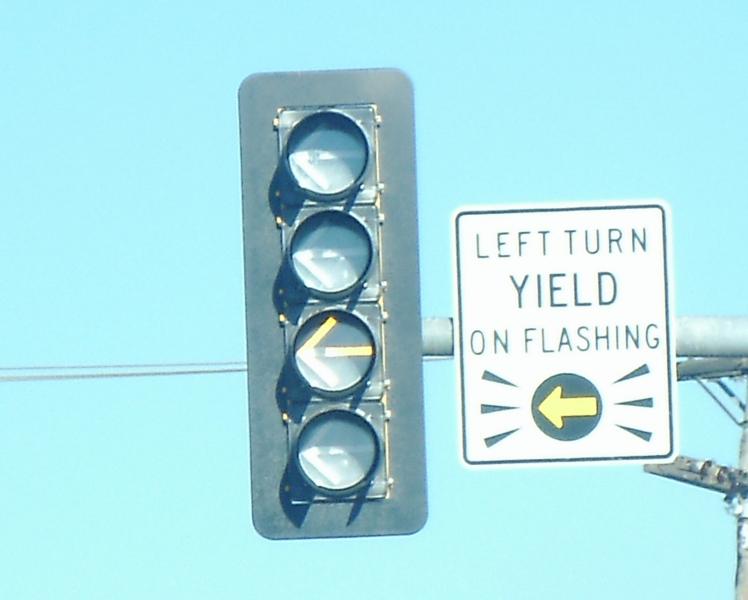
Emerging technologies have replaced the five-section signal heads (that can display either a green ball, a green arrow, or both) utilized to provide protected/permissive left-turn phasing with a four-section signal head that includes a flashing yellow arrow. From top to bottom, this new 4-section signal head includes a solid red arrow, a solid yellow arrow, a flashing yellow arrow, and a solid green arrow like the image to the left. The protected portion of the left-turn phasing is accomplished with a solid green arrow. Meanwhile, the permissive portion of the left-turn signal phase is accomplished with a flashing yellow arrow. Clearance portions of the left-turn phase are accomplished with a solid yellow arrow and a red arrow. With a new Ordinance approved by Council in January, 2011, the City has completed the conversion process to utilize this new signal head at all locations where both protected and permissive left-turns are desired and an exclusive left-turn lane exists. An informational brochure was created for the flashing yellow arrows. To view this brochure, click on the following link to the Flashing Yellow Arrow Brochure.
What are the advantages?
The advantages of this operation when compared to protected only phasing are:
- Reduces delays, as left-turn drivers may have an opportunity to make their left-turns during the green interval
- Allows the use of shorter cycle lengths in coordinated systems by reducing the time of the fully protected green interval for the left-turn movement
- Less chance of disturbing traffic in adjacent lanes as left-turn queues are less likely to exceed the length of the left-turn lane
What is the Best Alternative for Left-Turn Signal Phasing?
Either signal phasing option can accommodate left-turn movements, and both has its place. The objective is to delay the usually heavier through traffic as little as possible while serving left-turn movements promptly and safely. The phasing of left-turn movements will always require engineering judgment because the provision for left-turn signal green time detracts from through traffic green time, and this requires balancing between signal phases for the total intersection.
Typical data, which will help determine the best option for left-turn phasing, are:
- Left-turn volumes (hourly during the peak hour)
- Cycle length (total of all phases)
- Opposing through traffic during the peak hour of highest left-turn demand
- Number of opposing traffic lanes
- Speed of opposing traffic
- Available sight distance
- Crash history, including left-turn crashes
Additionally, a time-space diagram showing progression for adjacent traffic signals should be reviewed.
Why Not Use Protected/Permissive Phasing Everywhere?
The City will use protected/permissive left-turn signal phasing where drivers can turn left safely because there are gaps in approaching traffic and drivers can clearly see oncoming vehicles.
In order to provide for good signal coordination, among adjacent traffic signals, protected/permissive signals will not be available at all intersections. Special left-turn sequencing is used to improve signal coordination and provide smooth through traffic flow at selected intersections. At these locations, one left-turn arrow comes before the through movements receive their green indication and the opposing left-turn arrow comes up after the through movements receive their green indication. Therefore, protected/permissive operation would be dangerous for the drivers.
There are some intersections where the City could install protected/permissive left-turns. However, this might require a longer mast arm and installation of new traffic signal heads which may not be in the current budget. The City may use protected/permissive signals wherever possible as traffic signals are modernized and new signals are installed at locations meeting the recommended criteria.
Speed Zones
Information
Speed zones are often taken for granted and until a problem arises, most people pay little attention to the theory behind them. The following information will help you understand how speed zones are established, and what they can and cannot do. The Traffic Division has created an informational brochure to distribute when questions arise concerning speed limits and speed zones. To access this brochure, please click the following: Speed Limit Brochure.
Speed Zone Misconceptions
When traffic problems occur, concerned citizens frequently ask why we don't lower the speed limit. There are widely held misconceptions that speed limit signs will slow the speed of traffic, reduce accidents and increase safety. Most drivers drive at a speed that they consider to be comfortable, regardless of the posted speed limit. Before and after studies have shown that there are no significant changes in average vehicle speeds following the posting of new or revised speed limits. Furthermore, research has found no direct relationship between posted speed limits and accident frequency.
Speed Laws
All fifty states base their speed regulations on the Basic Speed Law: "No person shall drive a vehicle ... at a speed greater than is reasonable or prudent ... and in no event at a speed which endangers the safety of persons or property."
Under Oklahoma law, the maximum speed limit in urban areas is 65 mph. All other speed limits are called prima facie limits, which are considered by law to be safe and prudent under normal conditions. Certain prima facie limits are established by State law and include the 25 mph speed limit in school zones when children are present. Other prima facie limits, which are listed in Chapter 20 of the City’s Code of Ordinances, include 15 mph speed limit in alleys and 50 mph speed limit on section line roads. These speed limits do not need to be posted to be enforced.
Speed limits between 25 and 65 mph are established on the basis of traffic engineering surveys. These surveys include an analysis of roadway conditions, accident records and a sampling of the prevailing speed of traffic. A safe and reasonable limit is set at or below the speed at which 85% of the drivers drive.
Traffic flowing at a uniform speed results in increased safety and fewer accidents. Drivers are less impatient, pass less often, and tailgate less, which reduces both head-on and rear-end collisions.
The posting of the appropriate speed limit simplifies the job of enforcement officers, since most of the traffic is voluntarily moving at the posted speed. Blatant speeders are easily spotted, safe drivers are not penalized, and patrol officers aren't asked to enforce and defend unrealistic and arbitrary speed limits.
Residential Streets
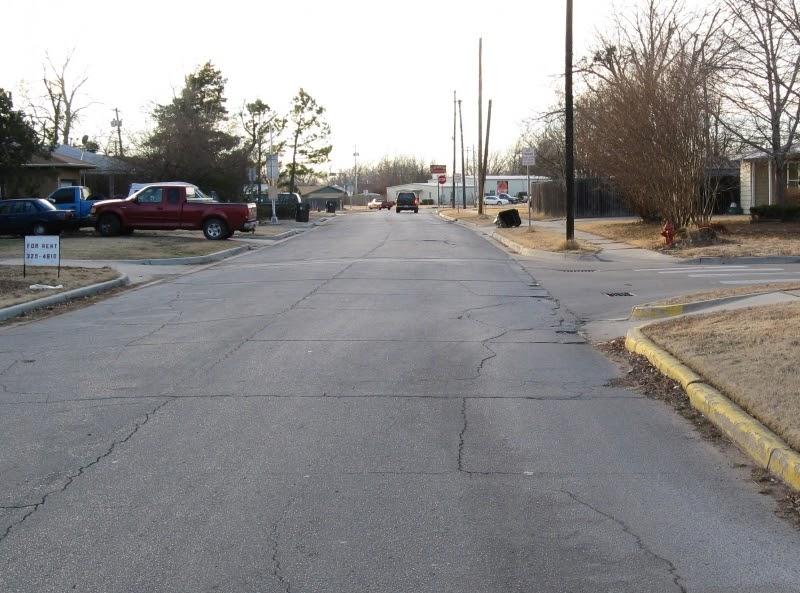
A 25 mph speed limit signs may be posted on residential streets without conducting a speed survey. A local street which is not designated as an arterial or collector on the Federal System Map or in the City's Current Comprehensive Transportation Plan, may have its residential speed limit posted at 25 mph.
Collector Streets
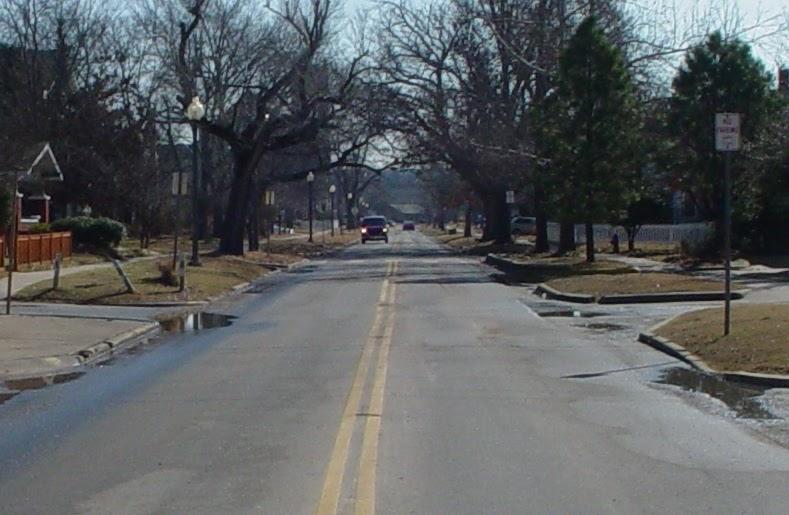
Collector streets typically conduct local street traffic to the arterial street system. There are a number of streets in the City which are designated collector streets in order to receive Federal funds for maintenance. Although these streets are of a residential nature, they are not local streets and do require speed limits to be posted based on speed surveys. Typically, the streets have speed limits of 30 mph to 40 mph. Examples of residential collectors include the following:
- Brookhaven Boulevard: Robinson Street to Danfield Drive
- McGee Drive: Imhoff Road to Boyd Street
- Oakhurst Avenue: Imhoff Road to Lindsey Street
- Sequoyah Trail: Rock Creek Road to 12th Avenue NE
Arterial Streets
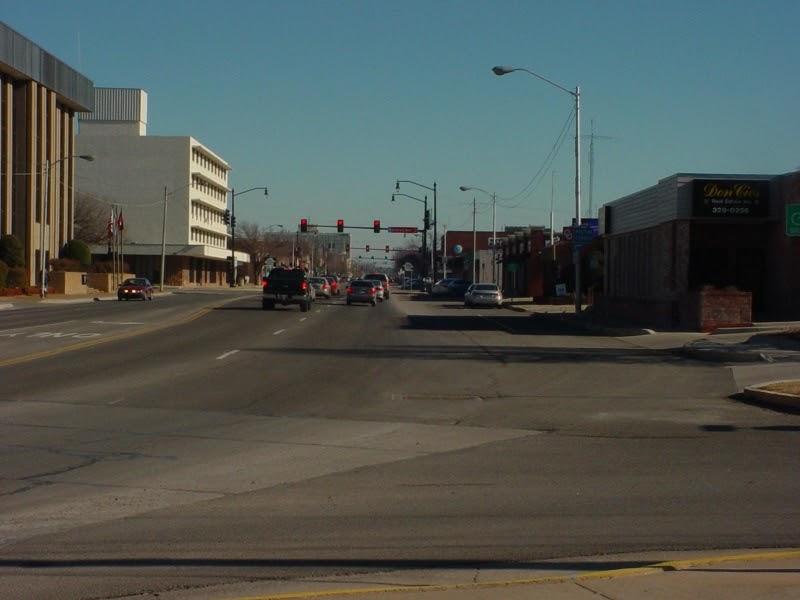
Arterial streets are typically multi-lane roadways (existing or planned for the future) serving commercial and business land uses, carry the major traffic flow throughout the City and connect City streets to the State Highway or Freeway system. The speed limit on these streets are always required to be posted based on speed surveys. Typical speed limits on arterial streets are 35 to 55 mph. The following are examples for some of streets classified as arterials:
- Main Street: 48th Avenue NW to 12th Avenue NE
- Alameda Street: Porter Avenue to 72nd Avenue SE
- 12th Avenue East: Classen Boulevard to Indian Hills Road
- Indian Hills Road: 72nd Avenue NW to 48th Avenue NE
- 120th Avenue East: Alameda Drive to Stella Road
Traffic Speeding Issues
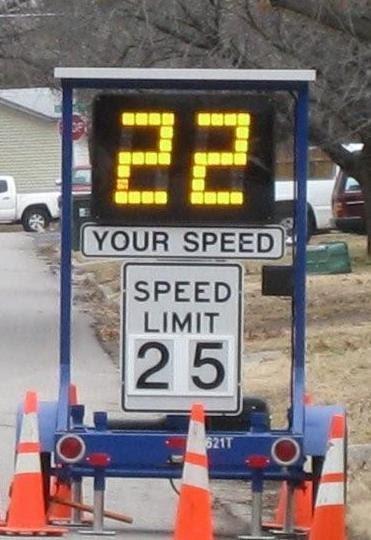
The City has an adopted Neighborhood Traffic Management and Calming Program to address speeding and cut through traffic problems. For information about this program, please call the Traffic Control Division at (405) 329-0528.
Citizen Concern
The City of Norman takes the role of solving traffic problems very seriously, yet the ultimate burden of safety rests with you, the motorist in Norman. Since we receive numerous requests from citizens every year, we cannot always investigate your request as quickly as we would like. However, we will respond after carefully evaluating your request, typically within 45 to 60 days.
We appreciate your patience and understanding.
Speed Control
Information
Each year, the City of Norman receives many inquiries about installing STOP signs or traffic signals as a way to reduce speeding. However, research shows that other measures are often more effective than adding more STOP signs or traffic signals. The purpose of STOP signs and traffic signals is to assign right-of-way at an intersection, not to control speeding.
Public understanding of the function of STOP signs and traffic signals is one of the most critical elements in reducing speeding and traffic accidents. The following information explains our policies on intersection traffic controls and the correct use of STOP signs and traffic signals. In response to these inquiries, the Traffic Division has created an informational brochure related to STOP signs and traffic signals that can be printed and distributed to inquiring citizens. You can access this informaional brochure by clicking on the following: STOP Signs and Traffic Signals Brochure.
Installation Policies
The Federal Manual on Uniform Traffic Control Devices (MUTCD) was developed through observation of driver responses to traffic situations. The MUTCD provides guidelines for installing signs and thus creates uniformity from state to state. The State of Oklahoma has adopted the MUTCD in Title 47 of the Motor Vehicle and Highway Safety Code.
The MUTCD, which includes policies and guidelines for the installation of STOP signs and traffic signals, has also been adopted by the City of Norman (Section 20-1112 of the City’s Code of Ordinances). The policies it contains identify specific traffic and pedestrian volumes, accident history, and any unusual conditions which will result in the desired driver response once a traffic control device is installed. If those conditions are not present, a percentage of the drivers will ignore the traffic control device.
Stop Signs
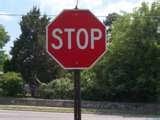
STOP signs are installed at an intersection only after a careful engineering evaluation of the existing conditions show that the installation of such devices is appropriate.
Our experience has shown that simply improving the intersection visibility by prohibiting parking near the intersection is often more effective in reducing traffic accidents. This often reduces the need to install more restrictive intersection controls. Overuse of STOP signs reduces their effectiveness and if installed where not justified, they are largely ignored by drivers who tend to speed up between STOP sign controlled intersections rather than slow down.
Multi-way STOP control can be useful as a safety measure at intersections if certain traffic conditions exist. Safety concerns associated with multi-way stops include pedestrians, bicyclists, and all road users expecting other road users to stop. Multi-way STOP control is used where the volume of traffic on all of the intersecting roads is approximately equal. Request for multi-way STOP control should be forwarded to the City Transportation Engineer or City Traffic Engineer who will authorize a traffic study to determine if the
Traffic Signals
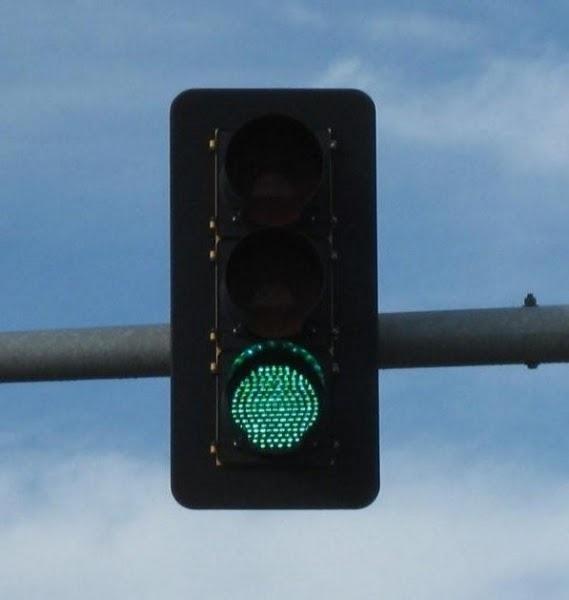
The City has two types of traffic signals: fixed time signals and traffic actuated signals. Fixed-time signals are set for average conditions and change at predetermined time intervals. Traffic actuated signals detect vehicles and adjust the timing to optimize traffic flow at the intersection.
Along some of our major arterials which have several traffic signals spaced at periodic intervals, the traffic signals are usually synchronized to provide coordinated movement along the major street. Before installing a traffic signal at an intersection, established minimum criteria must be satisfied.
Our review includes an examination of:
- The amount of vehicular and pedestrian traffic,
- The need to provide interruption to the major flow for side street vehicles and pedestrians, and
- The accident history of the intersection.
Over the past several years, the City of Norman has installed signals at an average of 4-5 per year. These signals are installed using various funding sources, including your gas tax dollars, state and federal funds, and developer fees. Costs to install a new traffic signal are approaching $250,000. Therefore, the installation of new traffic signals must be
Pedestrian Signals
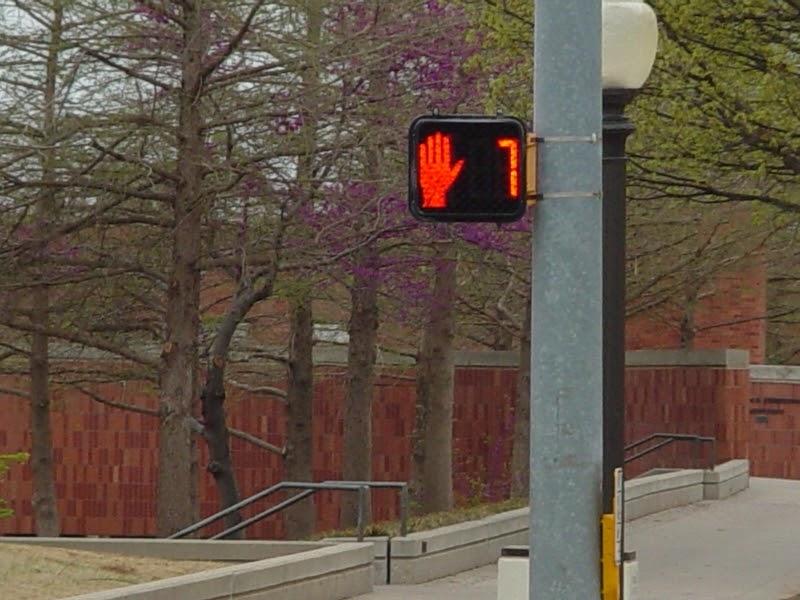
Pedestrian signals have evolved since the 1930s and 1940s. For years, the version of the pedestrian traffic signals utilizing the "WALK" and "DON'T WALK" messages were in place at various intersections around the City. Those signals have been replaced wiht the image of the walking man symbolizes the "WALK" interval, and the image of the upraised hand symbolizes the "DON'T WALK" interval. Now, the "WALK" and "DON'T WALK" messages have been replaced with solid walking man and solid upraised hand images. In addition, Norman has transitioned to the point that all of our pedestrian signal heads feature the countdown indication. Below are images of all the aforementioned signal types.
The countdown feature will begin with a large number that is equal to the length of the clearance interval that will count down toward zero. When zero is reached, the clearance interval has ended and the steady upraised hand is displayed to suggest that pedestrians should no longer enter the intersection. Research has shown that pedestrians have a better understanding of the clearance interval when associated with the countdown feature.
The latest, ever evolving, innovations in the area of pedestrian equipment are the accessible pedestrian pushbuttons. Some entities have utilized a device that can be added to traditional pedestrian signal head equipment to give the visually impaired pedestrians a cue that it is safe to cross a given direction. These devices emit a "chirp" or a "cuckoo" sound depending on which crosswalk is safe to cross. This can be somewhat difficult for some pedestrians to comprehend exactly which direction is safe to cross. This technology has further evolved to develop accessible pedestrian pushbuttons which give an audible indication to pedestrians as to which crossing has the right-of-way by giving verbal instructions as to the particular street which may be crossed. This type of accessible pedestrian pushbutton has become the standard for use at new intersections in Norman. In addition, projects have spread the technology to other locations.
Traffic Signal Management/Fiber Optics
The City of Norman continues to complete a combination of City funded and Federal Stimulus funded projects to install a fiber optic network for the City, by establishing connections between all city facilities, and to develop an enhanced traffic signal management system. The combination of these projects has had a number of benefits to citizens and to employees of the City of Norman. These include, but may not be limited to, the following:
- Public Works--Real-time access to current street and utility infrastructure, new construction, and work order status.
- Public Safety--Better able to access and input records data from remote locations ensuring personnel have the most up-to-date information when responding to incidents.
- Bandwidth improvements--Allows City employees to be more efficient in their jobs and devote more time to customer service.
- Improved citizen experience accessing City information, business, and video streaming of Council meetings from the Internet.
Fiber optic cable is constructed of glass, and data is transmitted using light spectrum. Fiber optic cable provides high bandwidth capacity and provides secure, reliable connections. Fiber optic cable was needed to address a number of the network deficiencies that had been identified by the Information Technology Department of the City. In addition, the use of fiber optic cable would allow the Traffic Division to upgrade the means of interconnection between traffic signals while allowing flexibility to manage the City’s traffic signals on a powerful, more sophisticated traffic management platform. The evolution of the numerous fiber optic projects has allowed the City to install more than 50 miles of fiber optic cable. It provided connectivity to several remote facilities and the incorporation of more than three-fourths of the traffic signals within the City of Norman into a central management system.
The Centracs system was launched in Norman in November 2009. At the time it was launched, Norman joined a handful of municipalities that had successfully launched the system. With the Centracs system, Norman is able to take advantage of the traffic signal management and control that the system affords. One of the best features of the Centracs system is that we are sent alerts when certain field conditions happen. One of the best examples is when an intersection that is part of the Centracs system goes into flash. Centracs will send us an e-mail and a text message to whomever the City designates when a signal goes into flash. This allows us to get technicians into the field more quickly to respond to these types of events. As more and more of our signals are added to Centracs, we rely less and less on law enforcement or citizen calls to report a signal in flash. This feature allows us to cut the response times significantly. Strategic planning is necessary to make sure future fiber corridors are identified to make sure that new signals can be brought into the Centracs system as the opportunities to do so become apparent in the future.
Traffic Division of Public Works Department
For more information about Traffic Control in the City of Norman, please visit:
